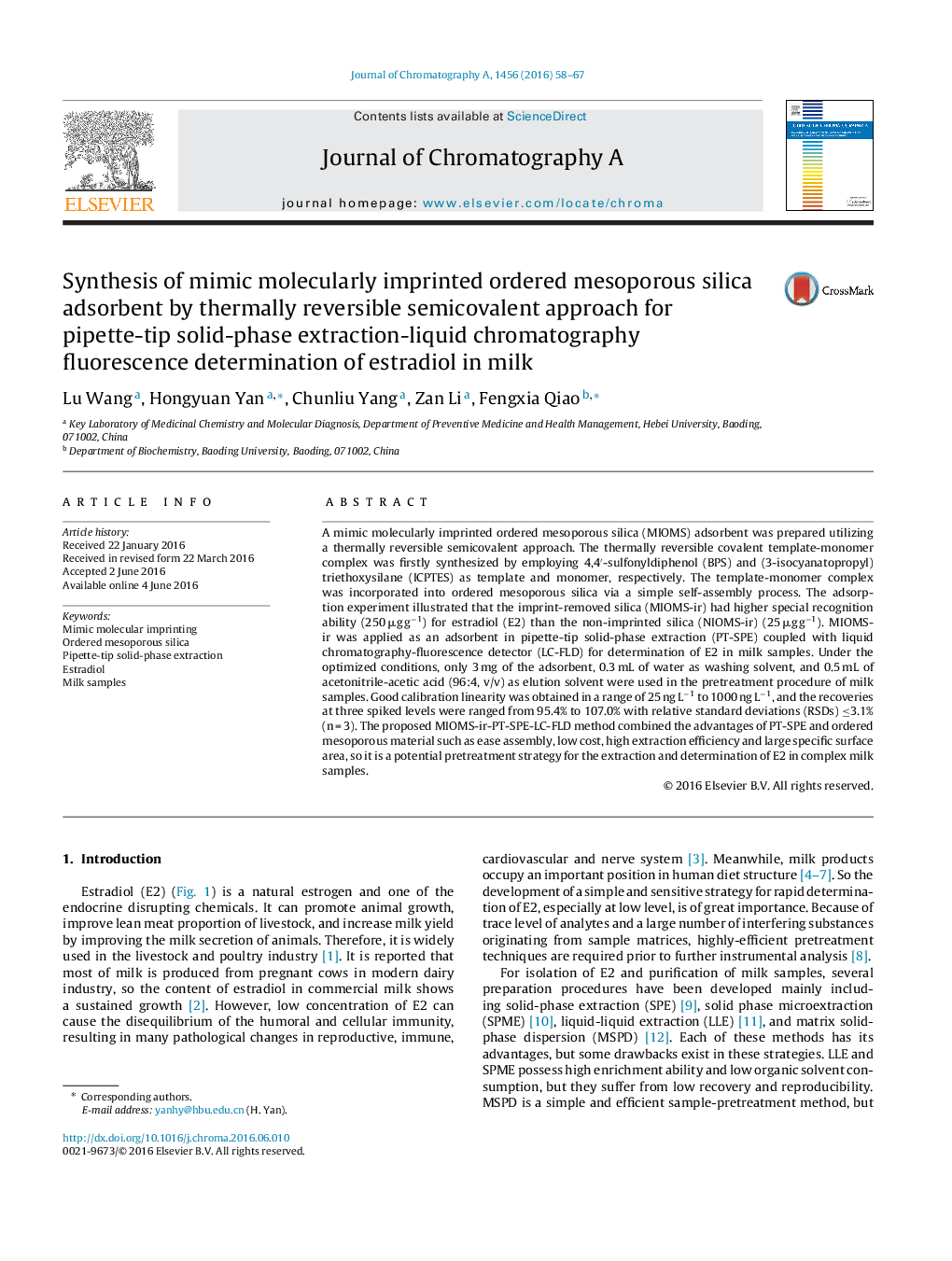| Article ID | Journal | Published Year | Pages | File Type |
|---|---|---|---|---|
| 1198721 | Journal of Chromatography A | 2016 | 10 Pages |
•Mimic molecularly imprinted ordered mesoporous silica adsorbents are prepared.•4,4′-Sulfonyldiphenol and (3-isocyanatopropyl) triethoxysilane used as template and monomer.•Pipette-tip solid-phase extraction coupled with liquid chromatography detection of estradiol.•Trace level of estradiol in milk samples were rapidly extracted and isolated.
A mimic molecularly imprinted ordered mesoporous silica (MIOMS) adsorbent was prepared utilizing a thermally reversible semicovalent approach. The thermally reversible covalent template-monomer complex was firstly synthesized by employing 4,4′-sulfonyldiphenol (BPS) and (3-isocyanatopropyl) triethoxysilane (ICPTES) as template and monomer, respectively. The template-monomer complex was incorporated into ordered mesoporous silica via a simple self-assembly process. The adsorption experiment illustrated that the imprint-removed silica (MIOMS-ir) had higher special recognition ability (250 μg g−1) for estradiol (E2) than the non-imprinted silica (NIOMS-ir) (25 μg g−1). MIOMS-ir was applied as an adsorbent in pipette-tip solid-phase extraction (PT-SPE) coupled with liquid chromatography-fluorescence detector (LC-FLD) for determination of E2 in milk samples. Under the optimized conditions, only 3 mg of the adsorbent, 0.3 mL of water as washing solvent, and 0.5 mL of acetonitrile-acetic acid (96:4, v/v) as elution solvent were used in the pretreatment procedure of milk samples. Good calibration linearity was obtained in a range of 25 ng L−1 to 1000 ng L−1, and the recoveries at three spiked levels were ranged from 95.4% to 107.0% with relative standard deviations (RSDs) ≤3.1% (n = 3). The proposed MIOMS-ir-PT-SPE-LC-FLD method combined the advantages of PT-SPE and ordered mesoporous material such as ease assembly, low cost, high extraction efficiency and large specific surface area, so it is a potential pretreatment strategy for the extraction and determination of E2 in complex milk samples.
